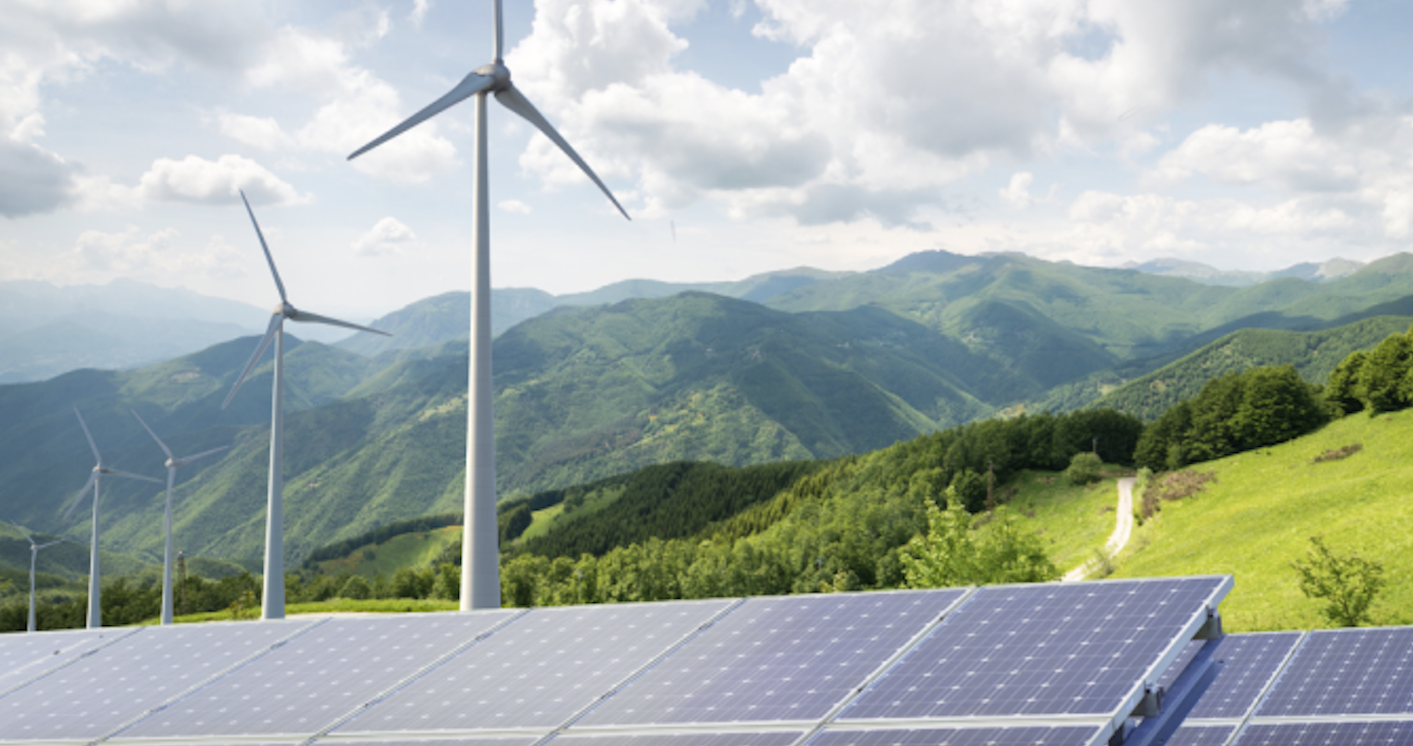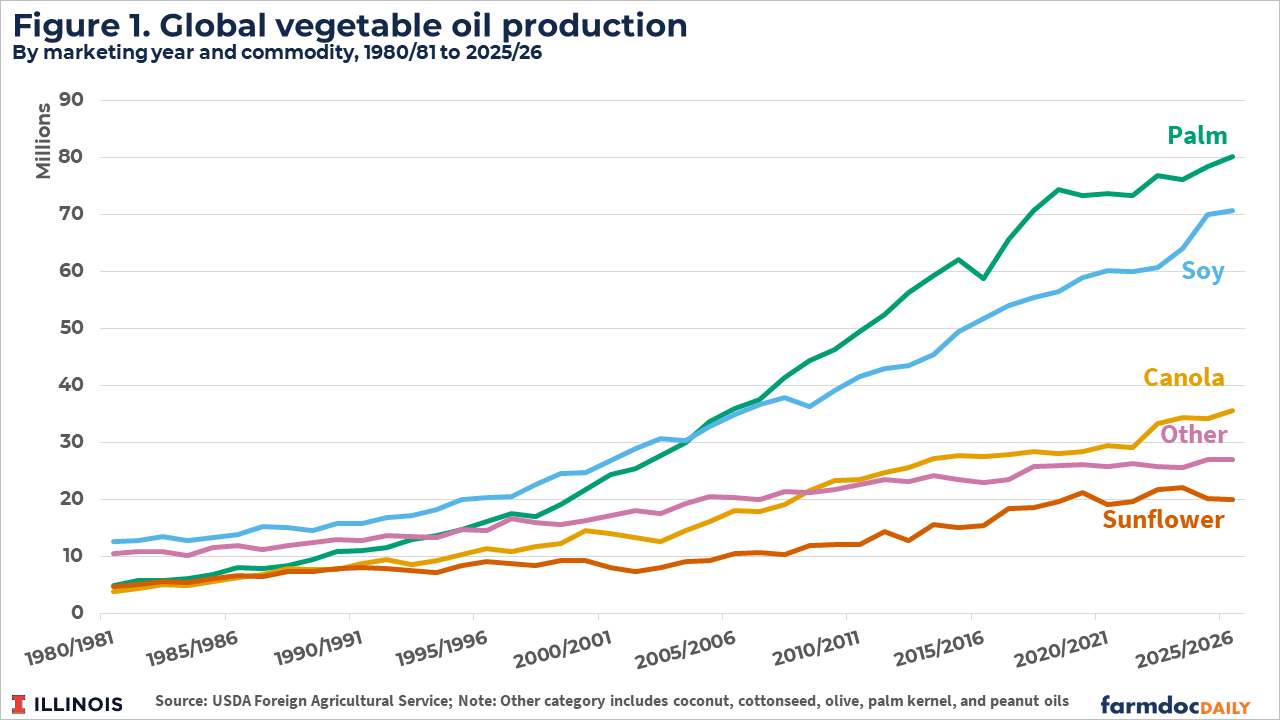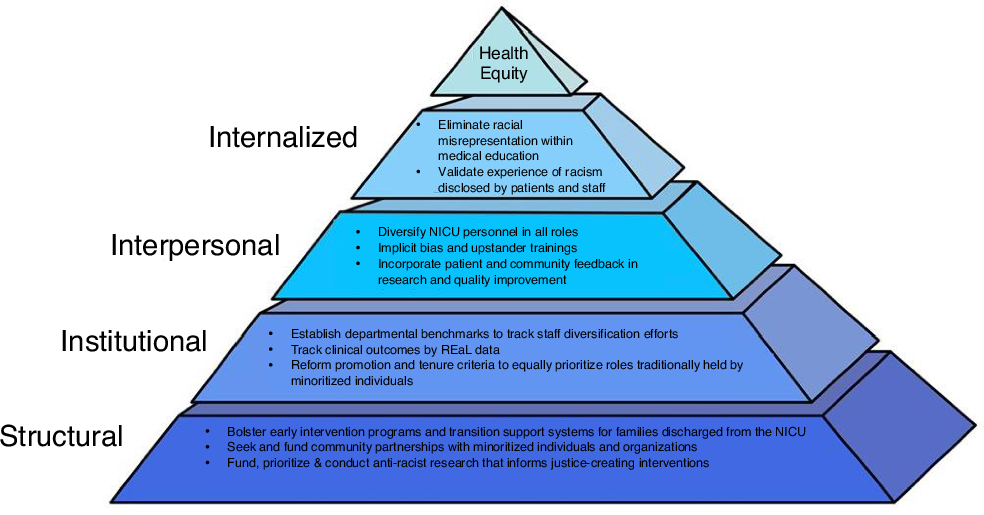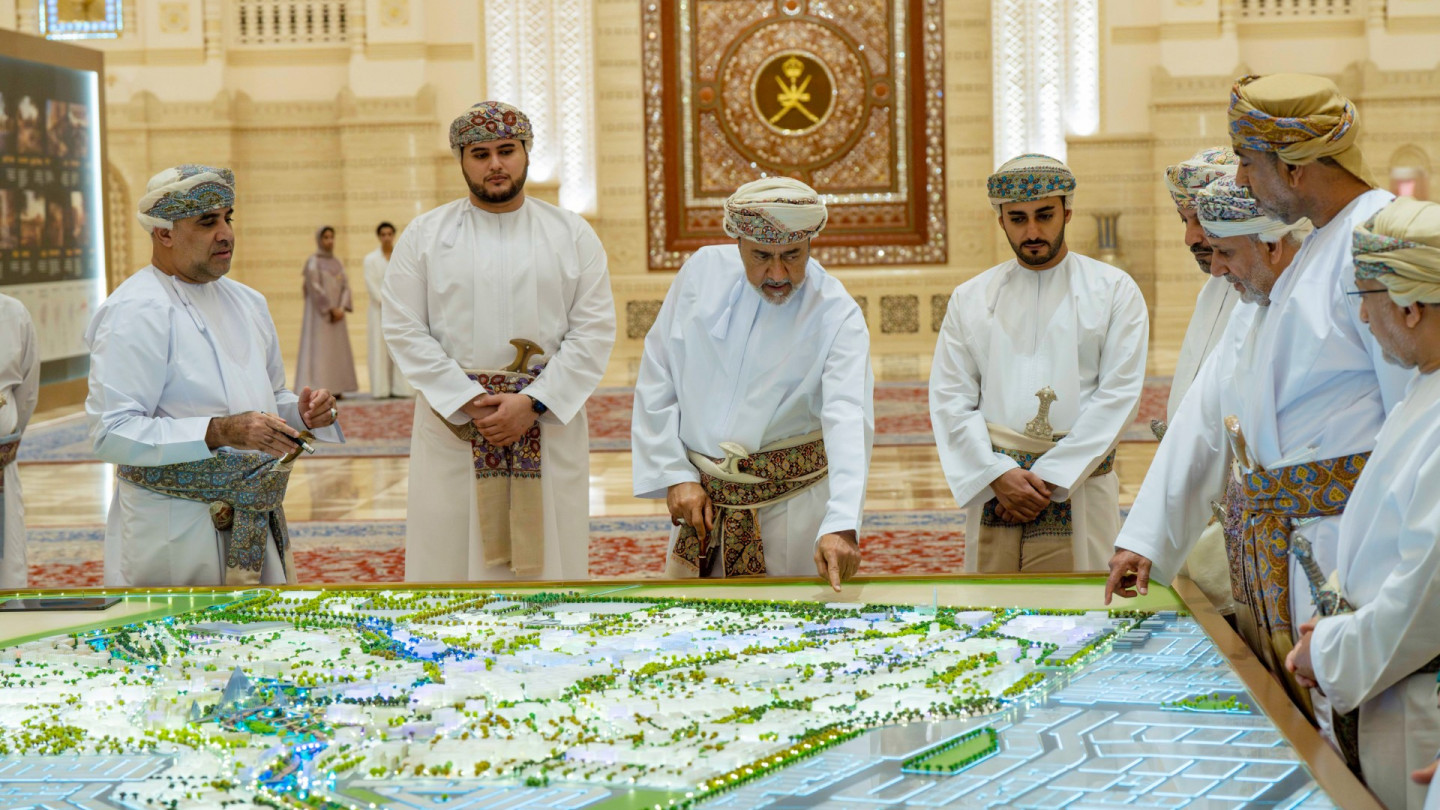Bridging resource disparities for sustainable development: A comparative analysis of resource-rich and resource-scarce countries
This paper aims to investigate the disparities between resource-rich and resource-scarce countries and their profound implications for sustainable development. By analyzing the distinctive resource endowments of these countries, we highlight the capacity of resource-rich countries to effectively manage and utilize resources for sustainable development, leading to various benefits such as investment opportunities, economic advantages, and significant social and environmental impacts. Conversely, resource-scarce countries face multiple challenges including environmental problems, inadequate infrastructure, poverty, social inequality, environmental destruction, and climate change. These disparities underscore the critical importance of addressing the resource divide for sustainable development. In this context, we emphasize the need for resource-rich countries to focus on improving living standards, providing employment opportunities, and ensuring social security. Simultaneously, resource-scarce countries must strengthen their management of environmental issues and public health to enhance the overall quality of life. To address environmental concerns, resource-rich countries should adopt measures to minimize the negative impact of resource exploitation and environmental pollution. Similarly, resource-scarce countries should prioritize the promotion of environmentally friendly development to mitigate environmental damage and effectively tackle climate change. Additionally, it is imperative for all countries to enhance research and development efforts, as well as the utilization of both new and traditional energy sources, to achieve sustainable development.
1. Introduction
The inconsistency between resource-rich and resource-scarce countries, and its impact on sustainable development are a critical concern for the international community. With the deepening of globalization and international cooperation, the issue of resource allocation among countries has gained prominence, particularly regarding energy, minerals, and other resources (Feng et al., 2023; Zheng et al., 2023). Effectively managing and allocating resources while promoting balanced utilization and sustainable development on a global scale has become a shared challenge (Irfan et al., 2023).
This paper aims to address the disparities between resource-rich and resource-scarce countries and shed light on their implications for sustainable development. By conducting a comparative analysis, we contribute to the existing literature by providing insights into the challenges faced by resource-scarce, including medium human development index (HDI) and low HDI countries, and proposing strategies for bridging the resource disparities. Additionally, our research emphasizes the key benefits of this paper for resource-scarce countries. Specifically, our contributions lie in the following aspects: First, we highlight the challenges faced by resource-scarce countries, including environmental problems, inadequate infrastructure, poverty, social inequality, environmental destruction, and climate change. Further, we emphasize the importance of promoting environmentally friendly development in resource-scarce countries to mitigate environmental damage and effectively tackle climate change. Lastly, we highlight the significance of enhancing research and development efforts and utilizing both new and traditional energy sources for achieving sustainable development.
According to World Bank statistics, 36 countries in the world possess over 80% of natural resource reserves, primarily smaller and medium-sized countries, while 144 other countries have natural resource accounting for less than 1% of the global total (Oberle et al., 2019). This clear disparity between resource-rich and resource-scarce countries has significant negative consequences.
To begin with, resource-rich countries experience rapid economic development due to their abundant resources. However, if these resources are not managed and allocated effectively, it can undermine sustainable development. Some countries, constrained by limitations and lacking means to ensure resource utilization, struggle to achieve sustainable development.
Furthermore, resource-rich countries’ large reserves of natural resources enable them to successfully attract external investors (Asiedu, 2006). However, the influx of such a large number of investors can increase competition pressure and impact the existing labor force, ecology, culture, and legal norms (De Mello Jr, 1997; Zhang, 2001). In South Africa, the rapidly expanding mining industry has brought numerous outsiders, new factories, ecological problems, and street problems (Abdurashidovich, 2020). Hence, the rapid expansion of overseas companies has greatly affected the local people. These issues can lead to large-scale instability and unpredictable situations in society, with implications for sustainable development.
Lastly, unbalanced natural resource reserves can affect competitiveness among countries (Irfan et al., 2022; Zeng et al., 2022). Despite performing better than resource-scarce countries in many aspects such as culture, education level, manpower, legal system, and legal norms (Dorninger et al., 2021), countries with relatively rich reserves of natural resources may still have a lower level of competitiveness. This imbalance in natural resources prevents a region from becoming truly competitive, even if it excels in other aspects.
In conclusion, although a country rich in natural resources has ample reserves to rapidly develop its economy and attract external investors, it cannot effectively ensure competitiveness or guarantee sustainable use of these natural resources. This situation leads to ecological problems, cultural shocks, and the erosion of legal norms, ultimately affecting the country’s overall sustainable development. Therefore, effective management and allocation of resources is the key to promoting the efficient use of global resources and sustainable development. In this regard, the governments of various countries need to take active actions to establish a reasonable resource management system to ensure the sustainable use of resources and promote sustainable development. Simultaneously, the international community should strengthen cooperation by formulating common standards and rules for resource management to reduce the inequity of resource distribution and promote the common development of all countries. Only through cooperation and hard work can we jointly promote the balanced use of global resources and achieve sustainable development.
2. Resource-rich countries
2.1. Resource management capabilities
Resource management capacity in resource-rich countries is critical to achieving sustainable development. Sustainable development is one of the most important tasks in today’s era, and its core goal is to achieve sustainable economic, social, cultural, and technological development under the premise of protecting the environment (Alper and Oguz, 2016). According to the report of the financial media Investopedia, Table 1 lists the ten countries with the highest total value of natural resources in the world. Resource abundance is a natural competitive advantage, but resource-rich countries are faced with complex issues such as how to use, protect and share resources, as well as how to promote sustainable development (Zhu et al., 2023). Consequently, they must strive to develop effective resource management capabilities.
Table 1. Ten countries with the highest total value of natural resources.
| Countries | Main Resource Types | Value |
|---|---|---|
| Russia | Oil, natural gas, aluminum, arsenic, cement, copper, magnesium metals and nitrogen, palladium, silicon and vanadium, etc. | $75 trillion |
| United States | Coal, wood, coal, oil, natural gas, iron ore, potassium, phosphate, sulfur, etc. | $45 trillion |
| Saudi Arabia | Crude oil, natural gas, copper, feldspar, phosphate, silver, sulfur, tungsten, zinc, etc. | $34.4 trillion |
| Canada | Wood, fresh water, potassium, uranium, tungsten, cadmium, nickel, lead, etc. | $33.2 trillion |
| Iran | Crude oil, natural gas, coal, chromium, copper, iron ore, lead, manganese, zinc, sulfur, etc. | $27.3 trillion |
| China | Coal, rare earth, antimony, coal, gold, graphite, lead, molybdenum, phosphate, tin, tungsten, vanadium, zinc, bauxite, cobalt, copper, manganese, silver, and chromium, etc. | $23 trillion |
| Brazil | Wood, petroleum, gold, iron, oil, uranium, bauxite, platinum, copper, tin, etc. | $21.8 trillion |
| Australia | Petroleum, natural gas, alumina, iron ore, copper, tin, gold, silver, uranium, nickel, tungsten, rare earth elements, ore, lead, zinc, diamonds, etc. | $19.9 trillion |
| Iraq | Oil, natural gas, phosphate, sulfur, etc. | $15.9 trillion |
| Venezuela | Iron, natural gas, oil, iron ore, gold, bauxite, hydropower, diamonds, etc. | $14.3 trillion |
Source: Investopedia
To begin with, resource-rich countries should adopt efficient resource utilization methods. According to a survey by the World Resources Institute, 59% of the land, 41% of the water, and 89% of the energy are used globally, indicating that there are problems of overexploitation and waste in natural resource utilization (Li et al., 2022b). Therefore, resource-rich countries should adopt effective methods, including ecological agriculture, low-energy production technology, recycling technology, and advanced information technology, to utilize natural resources. These methods reduce the use of natural resources and bring ecological conservation benefits.
Further, resource-rich countries should ensure their resource supply through diversification. According to Deloitte’s figures, more than 80% of China’s raw materials are imported, and they often face various supply risks (including price risk and supply interruption risk). This shows that a single source of supply to ensure sufficient supply is difficult. Therefore, resource-rich countries should ensure their resource supply through diversification to avoid the risks brought by a single source of supply and make full use of their unique advantages. Ensuring supply through diversification can simultaneously effectively reduce the impact of the crisis and increase national competitiveness.
Lastly, resource-rich countries must undertake the principle of permanent measurement and distribution considering ensuring the benefits of the people and committing to permanent guarantees. The “2030 Sustainable Development Goals” clearly defined the principle of “fundamentally equitable, reasonable, inclusive, balanced benefits and sharing opportunities for all countries” (Biglari et al., 2022). According to the 2030 Sustainable Development Goals Report in 2017, although the world’s poor population has generally declined in recent years (from 1.86 billion to 1.07 billion), the gap between the poor population is widening. This shows that although resource-rich countries have many resources, owning to one-sided resource allocation, they have not effectively brought about fair, reasonable, and inclusive development. Therefore, resource-rich countries must undertake the principle of permanent measurement and distribution, focusing on fairness and inclusiveness in the process of resource utilization and distribution, and ensure that resource utilization and distribution do not further widen the gap between the rich and poor. Simultaneously, resource-rich countries should pay attention to social responsibility, promote the fair use and sharing of resources and enhance the country’s image and credibility by cooperation with all sectors of society.
In conclusion, as a country rich in natural raw material resources, developing effective resource management capabilities is the key to determining whether it can achieve sustainable development. To reduce waste through effective resource utilization; in contrast, to ensure a large supply of raw materials through a diversified strategy to avoid the impact of the crisis, considering how to find the best method between optimizing the use and avoiding waste is essential.
2.2. Sustainable resources using
The sustainable use of resources is the key to ensuring the sustainable development of resource-rich countries. That needs to start from many aspects, including scientific and technological innovation (Su and Fan, 2022), policies and regulations (Ahmed et al., 2022), market mechanisms (Tian and Feng, 2022), and public education (Zou and Zhang, 2022).
To begin with, scientific and technological innovation is an important guarantee for the sustainable use of resources. Resource-rich countries should increase investment and efforts in scientific and technological innovation, promote technologies such as new energy, new materials, and new processes, improve resource utilization efficiency, and reduce resource consumption intensity (Ke et al., 2022). Simultaneously, the transformation and application of scientific and technological strides should be strengthened, and the coordinated development of resource utilization and environmental protection should be promoted (Ding et al., 2022).
Additionally, policies and regulations are important to safeguard the sustainable use of resources. Resource-rich countries should establish a sound policy and regulatory system, improve resource taxation and resource compensation mechanisms, and encourage resource-saving and environmentally friendly production and consumption methods (Lee et al., 2022). Simultaneously, strengthen the implementation of policies and regulations, strengthen resource management and supervision, and prevent excessive exploitation and waste of resources (Xu et al., 2022).
Furthermore, the market mechanism is an important means for the sustainable use of resources. Resource-rich countries should strengthen market supervision, establish a fair, transparent, and effective market mechanism, and promote the formation of resource prices and the optimization of resource allocation (Beumer et al., 2022). Simultaneously, enterprises should be encouraged and supported to carry out resource-saving and environmentally friendly production and operation (Li et al., 2023), as well as promote the coordinated development of resource utilization and environmental protection (Arslan et al., 2022).
Finally, public education is important to safeguard the sustainable use of resources. Resource-rich countries should strengthen public education, popularize resource-saving and environmentally friendly production and consumption knowledge, and enhance public awareness and understanding of sustainable resource utilization (Owojori et al., 2022). Simultaneously, the participation of social organizations and civil forces should be strengthened to promote the coordinated development of resource utilization and environmental protection (Bonnedahl et al., 2022).
2.3. Investment opportunities and advantages
Resource-rich countries can use their natural resources to make large-scale investments to boost their local economies. Numerous industrial plants and related infrastructure are built using local resources (Hu et al., 2023a). There are abundant energy development projects, agricultural production, tourism development projects, financial services, educational services, and medical services that are implemented through large-scale investment using local natural resources (Fahad et al., 2022). In addition, because local people focus more on local culture, historical heritage, and locally endemic species, they invest considerable manpower and material resources in protecting local cultural heritage, endemic species, and the ecological environment to protect local cultural heritage, endemic species, and the ecological environment (Barrile et al., 2022).
Because resource-rich countries have energy cost advantages, open markets, and abundant overseas markets (remarkably the ability to use low-cost energy to mine other energy to promote industrial structure upgrading) (Hu and Zhang, 2023). Resource-rich countries can effectively use this competitive advantage for development. For example, “Competitive Situation of China’s Integrated Circuit Industry in 2018” shows that China’s IC industry has formed a certain competitive advantage. “Competitive Situation of Indian IT Industry in 2018” shows that the Indian IT industry has formed a certain competitive advantage (Liu et al., 2022).
With the increasing level of globalization (according to 2018 IMF data, global GDP was almost balanced between 2016 and 2017), the competition among countries is becoming increasingly fierce (Buckley, 2022). Considering how to use the advantages and disadvantages among countries to promote competitive advantages among countries has great practical significance. Subsequently, attracting external parties to expand the domestic market is a necessary consideration.
In short, as a resource-rich country, it can use its massive renewable energy as internal support to promote the expansion of the international market and ensure that the local cultural heritage, endemic species, and ecological environment are fully protected. It is one of the advantages that cannot be ignored to attract external parties to market expansion in the domestic market by supporting corresponding laws and regulations with a large amount of manpower and material resources.
2.4. Social and economic impacts
The resource management capabilities and resource development methods of resource-rich countries affect environmental sustainability and directly affect the sustainable development of the country’s society and economy.
To begin with, the resource management capabilities of resource-rich countries directly affect their economic development. Resource development has always been the economic pillar of many countries, but in the process of resource development, if good resource management ability does not exist, it wastes many resources and may lead to environmental damage and social unrest (Mlachila and Ouedraogo, 2020). In addition, relying solely on the development of certain resources may lead to a single economic structure, lack of economic diversity, and increase economic risks (Frances et al., 2023). Consequently, resource-rich countries should develop diversified industries and promote the coordination of resource development and economic development.
Further, the resource management capabilities of resource-rich countries affect the sustainable development of society. In the process of resource development, social equity, and people’s livelihood issues need to be taken into consideration. If resource development is not conducive to people’s livelihood and social equity, it can lead to social instability and social unrest (Badeeb et al., 2017). Consequently, resource-rich countries should fully consider social equity and people's livelihood issues in resource development and take measures to protect people’s livelihood and rights.
Lastly, the resource management capabilities of resource-rich countries can affect the attitude and cooperation of the international community. Global resources are limited, and resource development and management methods in resource-rich countries affect the fairness of global resource distribution. If resources are not developed and managed appropriately, it may lead to trade restrictions and sanctions against the country by the international community and may lead to tensions in international relations (Germond-Duret, 2014). Therefore, resource-rich countries should cooperate with the international community to adopt sustainable resource management methods to promote the fairness and sustainability of global resource distribution.
In conclusion, resource-rich countries are faced with complex issues of utilization, protection, and sharing of resources and must strive to develop effective resource management capabilities. To achieve sustainable development, resource-rich countries should adopt efficient resource use, diversified resource supply, and permanent measurement of distribution principles while taking into account social and economic impacts. In recent years, all countries in the world have been contributing to sustainable development. Table 2 demonstrates the energy development strategies and policy trends of some major resource-rich countries in the world according to the report of Zhongneng Media Research Institute. Only under the premise of adopting sustainable resource management methods can the sustainable development of resource utilization, economy, society, and the environment be achieved.
Table 2. Energy development strategies and policy trends of some major resource-rich countries.
| Countries | Energy development strategies and policy trends |
|---|---|
| Russia | Russia will reduce net greenhouse gas emissions by 60% from 2019 levels by 2050 and by 80% from 1990 levels, and achieve carbon neutrality by 2060. |
| Canada | Canada will ban new gas car sales in 2035 and aims for net-zero emissions by 2050. |
| China | China strives to reach the peak of carbon dioxide emissions by 2030 and strives to achieve carbon neutrality by 2060. |
| France | France will rely on renewables and nuclear power to achieve net-zero emissions by 2050 |
| United Kingdom | The UK will reduce greenhouse gas emissions by 78% in 2035 compared with 1990 and will achieve a 100% clean carbon-free power supply in the power system by 2035. |
| United States | The United States seeks net-zero electricity sector emissions by 2035 and net-zero greenhouse gas emissions by 2050. |
Source: China Energy Media Group Co., Ltd
3. Resource-scarce countries
3.1. Environmental issues and public health crises
The inconsistency between resource-rich and resource-scarce countries, and its impact on sustainable development, especially regarding environmental issues and public health crises, have attracted the attention of scholars (Abid et al., 2022; Nazar et al., 2022). Due to resource scarcity, resource-scarce countries face severe challenges, notably in addressing climate change, protecting biodiversity, and reducing pollution (Hu, 2023).
According to a survey conducted by the International Energy Agency, in resource-scarce countries most affected by climate change, nearly 90% of the population cannot receive healthy water supplies (Salehi, 2022). In addition, the agency found that nearly half of the world’s population currently lives in highly uneven climate conditions, which would make it difficult for resource-scarce countries to implement effective climate change adaptation strategies (Birkmann et al., 2022).
The biodiversity estimate shows that the majority of countries experiencing significant biodiversity loss are resource-scarce countries (Habibullah et al., 2022). The assessment shows that biodiversity is declining dramatically due to increasing population pressure, agricultural expansion, mining, logging, fishing, tourism development, and other forms of expansion.
Due to limited resources, it is difficult for resource-scarce countries to effectively treat gaseous waste gas, industrial wastewater, agricultural chemicals, raw material waste, and biological waste. According to a survey conducted by the Global Health Department, most resource-scarce countries cannot have the capacity to effectively dispose of the aforementioned waste, which can pose a huge risk to public health (Narayanamoorthy et al., 2022).
In short, resource-scarce countries face enormous challenges in addressing climate change, protecting biodiversity, and reducing the public health risks posed by waste products because of their limited resources. For a country with limited resources to have a sustainable development system that can truly guarantee the health and happiness of the people, pay more attention to related issues and take strong and practical actions to promote sustainable development.
3.2. Insufficient infrastructure
With the development of the population, economy, and ecological system in countries worldwide, the problem of resource imbalance has become increasingly prominent. Some countries have many natural resources, while others barely have any. Such imbalances can have major implications for sustainable global development.
Inadequate infrastructure is a common problem in resource-scarce countries, as Table 3 displays. Infrastructure is an indispensable basic element in modern society, and it involves various fields, including transportation, communication, energy, and water resources (Frances et al.). It provides the necessary support and guarantee for economic development, social progress, and people’s lives. However, in some resource-scarce countries, the construction and maintenance of infrastructure are relatively backward, and it is difficult to meet the development needs of the country and the basic living needs of the people (Hu et al., 2023a).
Table 3. Resource-scarce countries and inadequate infrastructure.
| Countries | Inadequate infrastructure and resources |
|---|---|
| Costa Rica | Costa Rica has almost no natural resources. Although Costa Rica is surrounded by the sea, it is not rich in resources. The country’s investment and maintenance projects are relatively poor. |
| Gibraltar | Gibraltar has almost no natural resources. Gibraltar’s defense and foreign affairs are handled by the United Kingdom, and its infrastructure construction is backward. |
| Jan Mayen i. | Jan Mayen Island has only a part of gravel but is undeveloped and infrastructure is lacking. |
| Vatican | The Vatican has no resources of its own, and its infrastructure is largely focused on meeting the needs of the Holy See and Catholic pilgrims. |
Source: Authors’ summary and organization
Regarding transport, resource-scarce countries often lack efficient road and rail networks. This causes people to face the problem of inconvenient transportation in their daily life and business activities. Additionally, this affects the development of agriculture and manufacturing because the lack of good transportation infrastructure makes it difficult to transport materials (Zhao et al., 2022). Simultaneously, it may also harm the tourism industry, as tourists need good transport infrastructure to reach their desired destinations (Hafid et al., 2022).
Regarding communications, resource-scarce countries often face difficulties. Many people lack basic communication tools such as mobile phones and the Internet. This makes people limited in information transfer and communication (Zhang et al., 2022). This can harm economic development, as modern economies require efficient communication networks to support commerce and trade.
In the energy sector, some resource-scarce countries lack reliable energy supplies. This makes people face the problem of power outages and lack of fuel in daily life. Simultaneously, it also hurts the development of the industry and manufacturing industry because these industries require a lot of energy to support the production process (Jamil, 2022). The lack of a reliable energy supply can lead to instability in energy prices, which can adversely affect the economy.
Regarding water resources, some resource-scarce countries are facing the problems of water resource shortages and water pollution. This makes people face drinking water difficulties and sanitation problems in their daily life. Simultaneously, it negatively affects agriculture and fisheries, as these industries require sufficient water resources to support the production process (Morin-Crini et al., 2022).
Some resource-scarce countries cannot function properly due to inadequate infrastructure. According to the “2018 Gross National Product” (GDP) and “2018 Capacity Distribution” (CDI), more than 90% of people in low- and middle-income countries live without access to electricity, water, and healthcare services (Torres et al., 2019; Yakubu et al., 2022). In addition, more than 85% of people live without access to necessary education services and necessary road construction jobs (Singh et al., 2023). This means that most low-income countries do not have access to advanced, information technology (IT)-based services in communication, capacity, education, healthcare, capacity development, and agriculture and therefore cannot develop sustainably (Cai et al., 2023; Bai et al., 2023). Equally important: since low-income countries cannot have the capacity to develop new sources of energy or use new sources of energy to replace traditional sources of energy (such as crude oil, natural gas, or hydropower), they are unable to harness new sources of energy to reduce their impact on climate change, which also hinders the implementation of the Sustainable Development Goals in low-income countries.
Some low-income countries possess large quantities of natural gas, atomic energy, or mining resources (including copper, iron, or gold) but cannot develop these natural gas, atomic energy, or mining resources. This prevents them from implementing sustainable development goals. Example: As recently as July 1, 2008, Nigeria was in the midst of a complex situation, in which it had vast reserves of atomic energy, natural gas, copper, iron, and gold but was unable to develop them (Afolabi, 2019).
In summary, the irrational distribution of natural resources leaves some countries with large amounts of natural resources at the expense of others, who do not benefit for specific reasons, including inadequate infrastructure, that can impede the implementation of the Sustainable Development Goals.
3.3. Poverty and social inequality
Many resource-scarce countries often face poverty and social inequality, another important factor that makes sustainable development difficult. Due to economic and resource scarcity, populations in many resource-scarce countries live in extreme poverty, lacking food, water, and basic medical facilities (Seferidi et al., 2022). In some countries, the problems of resource scarcity and social inequality reinforce each other, forming a vicious circle that leads to unstable, unjust, and unsustainable social development (Schüle et al., 2019).
A report issued by the United Nations noted that although Africa is rich in natural resources, its per capita GDP is the lowest in the world. According to data from the World Bank, the poverty rate in sub-Saharan Africa is as high as 40%, and approximately 400 million people live in extreme poverty (Salecker et al., 2020). These data show a strong link between poverty and resource scarcity and suggest that achieving Sustainable Development Goals can be enormously challenging in the absence of resources.
Therefore, a range of policies and measures are required to address poverty and social inequality in resource-scarce countries (Wang et al., 2023). These include improving infrastructure, strengthening education and training, promoting technological innovation, reducing agricultural and food waste, improving public health and medical facilities, promoting social justice and equality, and improving political stability and governance. Only through the implementation of these measures can a stable, prosperous, and sustainable social system be established in resource-scarce countries.
3.4. Environmental damage and climate change
Other important issues facing resource-scarce countries are environmental destruction and climate change. The development of the economy and society requires many resources and much energy consumption, which leads to the destruction of the environment and the collapse of the ecosystem (Waheed et al., 2019). Environmental damage and climate change are particularly problematic in some countries, including oil-exporting countries. These countries depend on the export of resources, including oil; however, the greenhouse gas emissions and environmental damage caused by these exports have attracted global attention (Yusuf et al., 2020).
Simultaneously, climate change has brought many challenges to resource-scarce countries. These countries cannot generally adapt to climate change, so the impact of climate change has a great impact on their economic and social development. Extreme weather events such as droughts, floods, and sea-level rise can lead to reduced agricultural harvests, water shortages, and infrastructure damage (Beillouin et al., 2020). These factors may further exacerbate poverty and social inequality, leading to social instability and unsustainable development.
To address these challenges, a series of measures are needed. These measures include reducing greenhouse gas emissions, improving energy efficiency, promoting renewable energy, protecting ecosystems and natural resources, strengthening environmental monitoring and management, promoting a low-carbon economy, and strengthening the ability to adapt to climate change (Bi et al., 2023). These measures help to mitigate the effects of climate change and environmental damage and promote sustainable economic and social development, thereby achieving sustainable development goals for resource-scarce countries (Fernando et al., 2022).
In conclusion, the challenges faced by resource-scarce countries are multifaceted, including economic development, social stability, poverty and social inequality, environmental damage, and climate change. To achieve the Sustainable Development Goals, a series of comprehensive measures are needed, including improving infrastructure, strengthening education and training, promoting technological innovation, reducing waste, improving public health and medical facilities, promoting social justice and equality, and strengthening environmental protection and resilience to climate change. Sustainable development in resource-scarce countries and global sustainable development goals can solely be achieved through international cooperation and joint efforts.
4. Impact of inconsistencies on sustainable development
4.1. People’s living standards
Improving people’s living standards has always been a vital objective of national development and a crucial aspect of sustainable development. The effective adoption of sustainable development strategies plays a pivotal role in achieving this goal. Resource-rich countries can employ sustainable development principles, utilizing their abundant natural resources to develop diverse industries, create employment opportunities, and stimulate economic growth, thus enhancing the living standards of their citizens. For instance, China’s implementation of sustainable development practices has resulted in a nominal increase of 6.9% in the country’s total GDP and a real increase of 7.3% in the per capita disposable income of rural residents (Shi et al., 2019). However, it is important to note that resource-scarce countries can also enhance their citizens’ living standards through the adoption of sustainable development strategies.
Resource-scarce countries implement sustainable development, save energy, reduce waste, protect natural ecology, and make efficient use of natural resources. In South Africa, where resources such as land, water, oil, and electricity are scarce, the South African Department of Energy uses a “Strategic Energy Plan” to implement sustainable energy development. According to the department’s 2018 annual energy audit, South Africa reduced its electricity consumption by 43.77 million megajoules; from 2006 to 2016, the actual change in South Africa’s electricity energy efficiency was significant (+14.3%) (Baker and Phillips, 2019). Additionally, South Africa has greatly reduced the waste of natural resources and improved the living standards of local people by reducing waste, promoting recycling, and strengthening the integration of industrial chains.
Resource-scarce countries can save energy, reduce waste and protect natural ecology by adopting sustainable development strategies. In South Africa, the South African Department of Energy adopts a “Strategic Energy Plan” to implement sustainable energy development (Mutezo and Mulopo, 2021). South Africa has greatly reduced the waste of natural resources and improved the living standards of local people by reducing waste, promoting recycling, and strengthening the integration of industrial chains. Sustainable development can effectively improve people’s living standards in the country and protect the natural environment. In recent years, countries worldwide have faced serious challenges of environmental pollution and its impact on sustainable development (Seddon et al., 2020). Resource-rich countries must realize that their natural resources are limited, and overuse of these resources may lead to environmental damage, thereby affecting sustainable development. Many oil-exporting countries have neglected environmental protection in the process of economic development, resulting in problems such as oil field pollution, deforestation, and wildlife extinction. Consequently, these countries need to adopt sustainable development strategies to ensure that their natural resources are used rationally and protected.
Conversely, resource-scarce countries may face greater challenges due to environmental pollution and climate change, as they often rely more heavily on the environment for their economic and social development. Sustainable development is particularly crucial for these countries, as it enables them to address environmental challenges, promote resource efficiency, and ensure the long-term sustainability of their economic and social progress.
In summary, the adoption of sustainable development principles is instrumental in improving people’s living standards and protecting the natural environment in both resource-rich and resource-scarce countries.
4.2. Ecological environment
In recent years, the detrimental impact of environmental pollution on sustainable development has become increasingly evident, posing a significant global challenge. According to the 2015 Global Environmental Responsibility Report, more than 600,000 people die each day due to air, water, and other forms of pollution. It is projected that at least 158 million individuals will succumb to air, water, and soil pollution within the next three decades (Vohra et al., 2021). Moreover, the emission of chemical substances, including carbon dioxide and methane from fossil fuel consumption, such as coal, oil, and natural gas, has adverse effects on global climate change and ecosystems. Thus, protecting the environment has become an imperative requirement for sustainable development.
Environmental protection plays a pivotal role in implementing sustainable development for several reasons. Firstly, it helps mitigate environmental impacts by reducing resource and energy waste, maximizing the efficient utilization of limited resources, and preventing wasteful practices. Further, environmental protection contributes to minimizing the adverse effects of chemicals on ecosystems. The substantial decline in global biodiversity over the past fifty years, as documented in the 2017 Review of Ecology, can be attributed, in part, to the harmful effects of excessive chemical use (Sugai et al., 2019). The harm to ecosystems caused by large quantities of chemicals is one of the reasons for this. Therefore, protecting the environment helps to reduce harm to the ecosystem while simultaneously helping to ensure the safety of people’s lives. Lastly, protecting the environment helps promote sustainable development. Currently, all countries in the world have issued various laws and regulations to strictly monitor and protect the public interest, strengthen the monitoring of relevant departments, develop new energy sources, reduce waste gas and waste, start “low-carbon” and “no-waste gas” production methods and carry out “low energy consumption” and “zero waste” behaviors (Hu et al., 2023b). These measures are actions taken to ensure people’s survival. Ensuring ecological security, reducing the use of chemical substances, optimizing energy distribution, and innovatively applying new energy can help bring people into a truly “low energy consumption” era.
In conclusion, protecting the environment is a vital component of sustainable development. It aids in reducing negative impacts on ecosystems, promotes low energy consumption and zero waste practices, and ensures sustainable development. Therefore, all countries must adopt effective policy measures, fully recognize the importance of environmental protection, and promote the restoration of ecosystems, thereby enabling humanity to transition into a genuine era of low energy consumption and achieve sustainable development.
4.3. Energy production and utilization methods
Sustainable development aims to protect the environment, meet current needs, and ensure future social, economic, and cultural development. One of the key influencing factors is the improvement of energy production and utilization, which plays an important role in mitigating the differences between resource-rich and resource-scarce countries.
Taking China as an example, China is a country with scarce energy, but the government’s emphasis on energy utilization has led China to vigorously promote new energy power generation in 2016, and its total installed capacity of new energy power generation has increased by more than 200% between 2016 and 2019. According to the “2019 China New Energy Power Generation Market Development Report”, the total installed capacity of new energy power generation in the country reached 73,000 MW in 2019, accounting for 26.4% of the country’s total installed capacity. Among them, wind power capacity accounts for 61.0%of all new energy installed capacity, solar energy capacity accounts for 20.1%, and biomass energy, hydropower energy, and geothermal energy account for 7.3%, 5.3%, and 2.6%, respectively (Li et al., 2022a).
China has made substantial improvements in conventional energy generation. Relying on a variety of traditional power generation methods, including nuclear power, gas, thermal power, hydropower, and coal power, China achieved 35% of low-carbon power generation in 2018, and the proportion of low-carbon power generation in 2019 exceeded 40% (Fan et al., 2020). Conventional power generation is an essential source for safeguarding public life in China.
Countries should address resource disparities through concerted efforts and robust policies. Pertinent departments should strengthen the formulation and implementation of laws and regulations about new energy and its utilization, fostering the production and consumption of new energy sources. Moreover, countries should enhance cooperation, establish labor divisions, and avoid unnecessary competition in traditional energy utilization. Additionally, promoting the development and utilization of advanced storage, recycling, and renewable energy technologies is essential in reducing waste in traditional energy consumption.
In conclusion, endeavors to bridge resource disparities between countries significantly contribute to promoting sustainable development. Strengthening the production and utilization of new energy, optimizing traditional energy utilization to minimize waste, and international collaboration are effective means of advancing sustainable development.
5. Conclusions
In this paper, we explore the inconsistency between resource-rich and resource-scarce countries and the implications of this inconsistency for sustainable development. We find significant differences between them in terms of resource management, environmental issues, infrastructure, poverty, and social inequality.
Resource-rich countries have better resource management capabilities and sustainable use of resources. This capability and approach enable these countries to better control and manage their resources, thereby providing a solid foundation for economic growth and social development. In addition, rich resources provide them with investment opportunities and advantages, which help to attract foreign investment and promote economic growth. However, these advantages may lead to social and economic impacts, including overexploitation of resources and environmental damage.
In contrast, resource-scarce countries face a range of challenges, such as environmental problems, public health crises, inadequate infrastructure, poverty, and social inequality. These problems can lead to serious social, economic, and environmental consequences, including a decline in people’s living standards, health problems, inadequate infrastructure, social conflicts, and environmental damage. Additionally, these countries face global challenges such as climate change and environmental damage.
Thus, inconsistencies between resource-rich and resource-scarce countries have significant implications for sustainable development. Given this, we propose three main areas of impact: improving people’s living standards, protecting the environment, and improving the way energy is produced and used.
To begin with, we believe that to achieve sustainable development, both resource-rich and resource-scarce countries must commit to improving the living standards of their people. This requires measures to reduce poverty and social inequality, as well as to increase investment in education, health, infrastructure, and employment opportunities. This can contribute to more equitable, inclusive, and sustainable economic growth.
Further, we emphasize the importance of protecting the environment. Notably, in resource-rich countries, we must pay attention to environmental protection and sustainable development to avoid problems such as overexploitation and environmental damage. This requires the establishment of stronger regulatory mechanisms and policies to promote environmental action and the sustainable use of resources. Simultaneously, resource-scarce countries need to take measures to address the environmental problems they face to mitigate the social and economic impacts of climate change and environmental damage.
Lastly, we believe that improving the way energy is produced and used is a key factor in achieving sustainable development. In resource-rich countries, measures must be taken to promote energy diversification and reduce dependence on nonrenewable energy sources. This can be achieved through policy, technology, and market instruments, including the promotion of renewable energy and energy-saving technologies. In resource-scarce countries, measures should be taken to improve energy efficiency to reduce resource waste and environmental pollution.
Taken together, the inconsistency between resource-rich and resource-scarce countries has profound implications for sustainable development. A range of challenges, including resource management, environmental issues, infrastructure, poverty, and social inequality, must be addressed in the pursuit of sustainable development. It is important to note that resource-scarce countries encompass various classifications, such as medium HDI and low HDI countries. By acknowledging these distinctions, our study recognizes the diverse contexts and challenges faced by different resource-scarce countries.
What is Your Reaction?
 Like
0
Like
0
 Dislike
0
Dislike
0
 Love
0
Love
0
 Funny
0
Funny
0
 Angry
0
Angry
0
 Sad
0
Sad
0
 Wow
0
Wow
0
























































/environment-climate-change-and-health-(ech)/water-sanitation-hygiene-and-health-(wsh)/landfill-tuvalu-36092.tmb-1200v.jpg?sfvrsn=5c21fe40_1#)


















